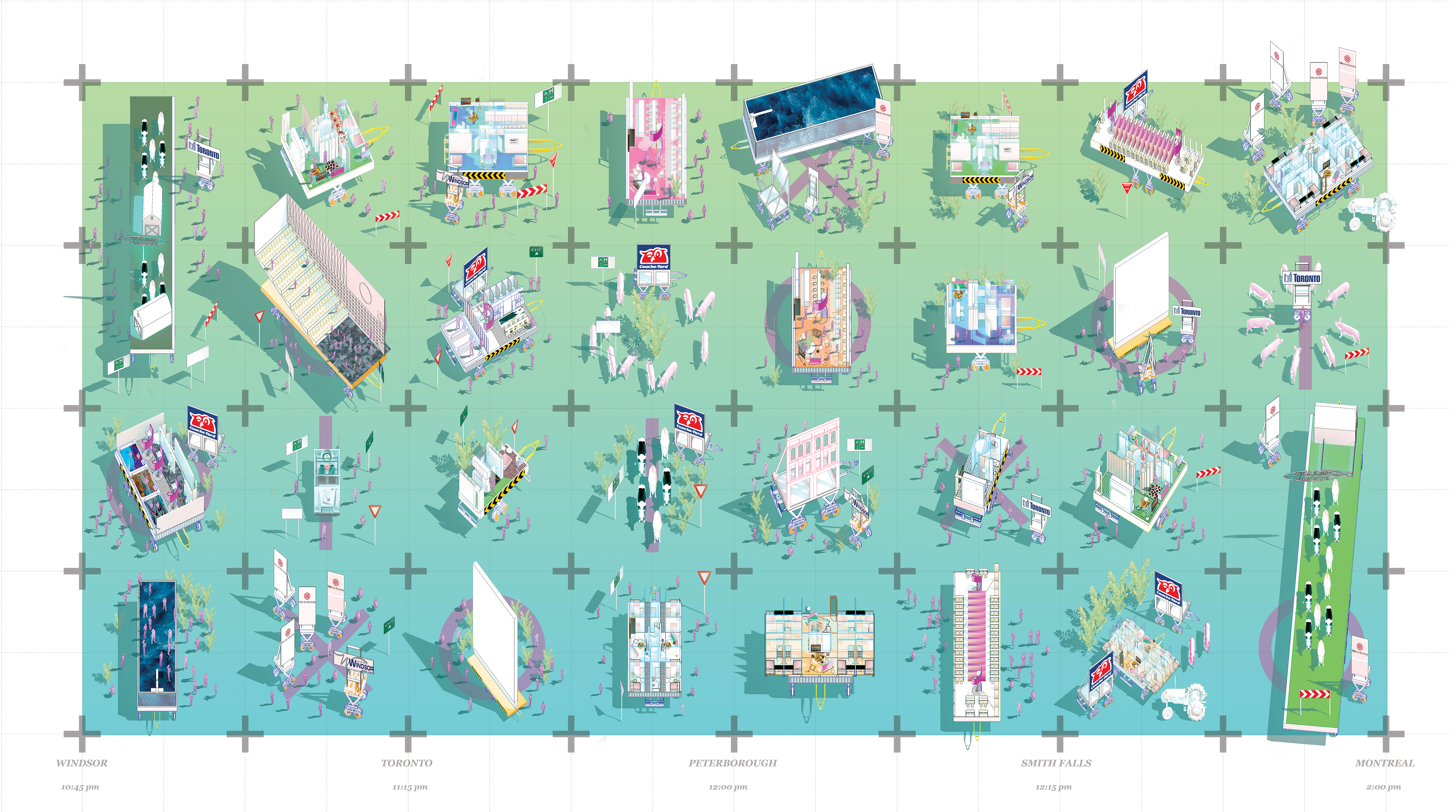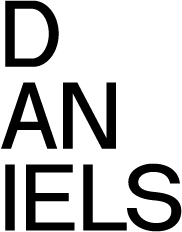
Rehearsing the Parade: Ephemeral Architectures and Persuasion on the Move
ARC3018HF (LEC0105)
Instructor: Miles Gertler
In this course we will examine and generate ephemeral architectures and urbanisms mobilized in service of performance, persuasion, and city-building.
In the Fall, our thesis seminar will first establish a fluency in analysis and communication, focusing on parades, rituals, instrumental architectures, and their spatial logics. We will use parade events as proxies to study spatial conditions that have materialized culture, technology, and politics as built form. In the Spring semester thesis studio, students will mobilize the tactics identified in their initial research toward the production of an architectural thesis project that responds to the urgencies of this moment.
Rehearsing the Parade is interested in strategic thinking, persuasive storytelling and representation, and the construction of architectural discourse. It is geared toward students who are curious about the ways architecture interacts with other forms of media and culture in the world. We will begin with what might seem at first like a niche subject matter to produce useful knowledge with broad applications for architecture and spatial practice.
After all, parades are inherently architectural: this course sees them as pragmatic tools for city-building. They organize space, transmit messages to publics, and often model prospective worlds or realities yet to come. We could similarly attribute these conditions to architecture, and indeed, parades are designed and behave like so many artifacts shaped by design labor. Unsurprisingly, architecture has a disciplinary history in their design. Parades and a few related typologies, like processions, convoys, and rituals—as well as their space-making strategies—first take the focus in this thesis seminar. Students will engage in typological analysis of the ephemeral and eventually re-route their formal, communicative, and organizational tactics toward architectural situations serving daily life.
Our seminar will examine and discuss historical and contemporary episodes, texts, and videos. We will study diverse situations to identify urgent subject matter that will inform students’ thesis projects in the following semester. In past editions of this course, students have used parades as an entry point to study tourism propaganda, climate data preservation, forest stewardship, debt trap diplomacy, queer kinship, thermal comfort, underground party movements, dissident ecological activism, museology, and the helium economy. Your inquiry in this course may be similarly expansive and lead to a thesis project born of the research interests you already harbor.
Classes will begin in a collective discussion format in which all students will participate in response to weekly readings, viewings, and diverse media like news stories, memes, interviews, zines, and more. These discussions will shape our research itinerary and inform the production of the course assignment: a progressively developed, complex drawing of a contemporary parade situation. Near the midpoint of the semester, the course will begin to privilege desk crits to advance work on the course assignment.
Tentative ARC3018 Seminar Assignment
In addition to completing weekly course readings and viewings, and engaging in discussions every class day, each student will identify a single parade, procession, convoy, or ritual situation to document in a complex, isometric drawing over the course of the Fall semester.
In so doing, students will produce a hyper-detailed account of their situation’s performance and the expanded world in which it yields spatial impact. This complex representation will be at once diagrammatic and comprehensive, endeavoring to present simultaneously all the geographies, inputs, actors, and events that characterize their episode of focus. The drawing may develop formal, technological, political, economic, and climatic features and scrutinize their engagement with architecture and the lived environment.
Students will use their complex drawing to present, discuss, and analyze the space-making tactics embedded in the situations they research to tee up the strategies that will drive their thesis projects forward in the following semester. Students will present in-progress work throughout the Fall semester as the drawing builds in content and complexity.

